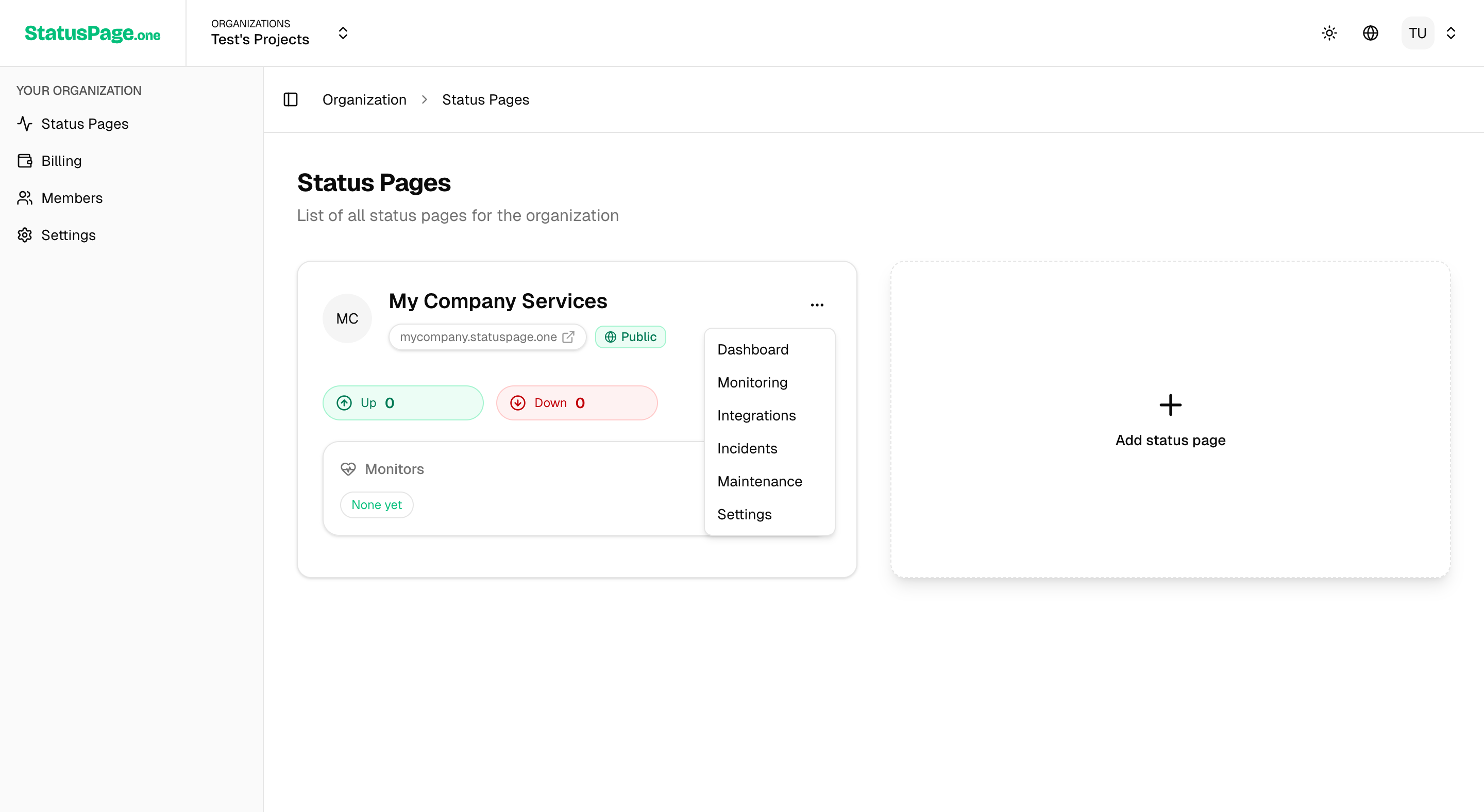Status Pages Overview
Learn about status pages, their benefits, and how they integrate with your monitoring system to provide transparent service communication.
Status Pages Overview
Status pages are public-facing websites that communicate the real-time status of your services to your users. They provide transparency during outages, scheduled maintenance, and normal operations, helping maintain trust and reduce support tickets.
What are Status Pages?
A status page is a dedicated website that displays:
- Real-time service status - Live uptime monitoring data
- Historical performance - Response times and uptime percentages
- Incident updates - Detailed communication during outages
- Scheduled maintenance - Advance notice of planned downtime
- Service metrics - Performance data across multiple regions
Key Benefits
Proactive Communication
Instead of waiting for users to contact support, status pages proactively communicate service issues and updates.
Reduced Support Load
Users can self-serve by checking the status page before contacting support, reducing ticket volume during incidents.
Trust and Transparency
Honest, timely communication about service issues builds trust with your users and demonstrates reliability.
SEO and Discoverability
Status pages are optimized for search engines with proper meta tags and OpenGraph integration.
StatusPageOne Features
Real-Time Monitoring Integration
- Near Real-Time (NRT) Updates: Status updates within minutes of detection
- Multi-Region Monitoring: Global monitoring from US East and South America regions
- Automatic Status Detection: Services automatically marked as up or down based on monitoring results
- Performance Metrics: Response times, uptime percentages, and historical data
Incident Management
- Manual Incident Creation: Create and manage incidents directly from the admin console
- Auto-Generated Incidents: Automatically create incidents when monitors fail based on configurable thresholds
- Incident Grouping: Related monitor failures are grouped into single incidents
- Status Updates: Post regular updates during incident resolution
- Severity Levels: Minor, major, and critical incident classifications
Visitor Subscriptions
- Email Notifications: Users can subscribe to receive incident updates via email
- Slack Integration: Direct notifications to Slack channels via webhooks
- Selective Subscriptions: Choose to receive updates for all services or specific ones
- Unsubscribe Management: Easy one-click unsubscribe functionality
Customization Options
- Custom Branding: Upload logos and customize appearance
- Domain Configuration: Use subdomains (company.statuspage.one) or custom domains
- Multi-Language Support: Built-in internationalization with automatic language detection
- Theme Options: Light and dark mode support with automatic system preference detection
Performance and Reliability
- Fast Loading: Optimized for quick loading times even during high traffic
- Mobile Responsive: Works seamlessly on all device types
- Accessibility: WCAG compliant with proper semantic markup
- CDN Distribution: Global content delivery for fast access worldwide
How It Works
1. Monitor Integration
Your uptime monitors automatically feed data into the status page system. When a monitor detects an issue, it can:
- Update the service status in real-time
- Automatically create incidents based on your configuration
- Track response times and availability metrics
2. Incident Lifecycle
Monitor Failure → Auto Incident Creation → Status Updates → Resolution → Post-Mortem
3. Visitor Experience
Users visit your status page to:
- Check current service status
- View ongoing incidents and updates
- Subscribe to notifications
- Review historical performance data
4. Admin Management
From your admin console, you can:
- Create and manage status pages
- Configure incident automation
- Post manual updates
- Customize branding and settings
- View subscription analytics

Getting Started
Ready to create your first status page? The next sections will guide you through:
- Creating a Status Page - Step-by-step setup guide
- Customization - Branding and appearance options
- Custom Domains - Setting up your own domain
- Incident Management - Managing outages and maintenance
Best Practices
Keep It Simple
Status pages should be easy to understand at a glance. Use clear service names and avoid technical jargon.
Be Proactive
Update your status page as soon as you become aware of an issue, even if you don't have all the details yet.
Regular Updates
During incidents, provide regular updates even if there's no new information. Silence can be interpreted as neglect.
Historical Context
Maintain a history of incidents to demonstrate your commitment to transparency and continuous improvement.
Mobile-First
Ensure your status page works well on mobile devices, as users often check status on their phones during outages.
Improve this page
Found an error or want to contribute? Edit this page on GitHub.